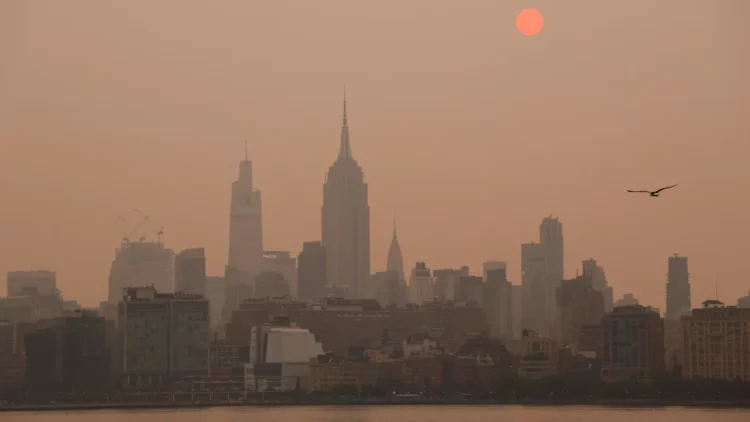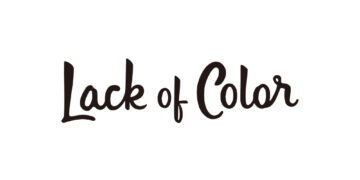New York Air: Battling the Worst Air Quality in the World as Canadian Wildfires Rage On.
The picturesque skyline of New York City, renowned for its iconic landmarks, has recently been marred by a cloud of haze and a sharp decline in air quality. As Canadian wildfires continue to rage on, the effects are being felt across the border, with New York facing some of the most severe air pollution levels in the world. The consequences of these wildfires extend far beyond the immediate vicinity, highlighting the interconnectedness of our global environment. This article explores the impact of the Canadian wildfires on New York City’s air quality, examines the causes behind the wildfire outbreak, and emphasizes the urgent need for international cooperation in addressing the underlying issues.
I. The Alarming Air Quality Crisis in New York:
A. The Deteriorating Air Quality:
- Measuring air quality: Understanding the Air Quality Index (AQI).
- The alarming levels of air pollution in New York City.
- The impact of poor air quality on public health and the environment.
B. The Influence of Canadian Wildfires:
- The transport of smoke and pollutants across borders.
- The scale and intensity of the Canadian wildfires.
- How meteorological factors exacerbate the impact on New York City.
C. Health Risks and Concerns:
- The immediate and long-term health effects of inhaling wildfire smoke.
- Vulnerable populations at higher risk.
- Strategies to mitigate health risks and protect public well-being.
II. Unveiling the Canadian Wildfire Crisis:
A. The Worsening Wildfire Situation:
- The geographical extent of the Canadian wildfires.
- The unprecedented intensity and frequency of wildfires in recent years.
- The challenges faced by firefighters and emergency response teams.
B. Causes of the Wildfire Outbreak:
- Climate change and its role in exacerbating wildfire conditions.
- Drought, heatwaves, and the drying of forests.
- Human activities and their contribution to fire-prone landscapes.
C. Environmental Impact and Ecosystem Disruption:
- The destruction of forests and wildlife habitats.
- The release of greenhouse gases and its implications for climate change.
- Long-term ecological recovery and the importance of conservation efforts.
III. The Need for International Cooperation:
A. Addressing the Root Causes:
- Collaborative efforts to mitigate climate change.
- Promoting sustainable land management practices.
- Investing in renewable energy and reducing reliance on fossil fuels.
B. Strengthening Fire Management Strategies:
- Enhancing wildfire prevention and early detection systems.
- Developing effective firefighting techniques and resources.
- Sharing knowledge and best practices among affected regions.
C. Public Awareness and Preparedness:
- Educating communities about wildfire risks and preventive measures.
- Establishing evacuation plans and emergency response protocols.
- Mobilizing resources to support affected communities and aid recovery efforts.
IV. Local and Global Response:
A. Public Health Measures:
- Issuing health advisories and providing guidance to vulnerable populations.
- Increasing access to air purifiers and respiratory protection.
- Offering medical assistance and support for affected individuals.
B. Air Quality Monitoring and Regulation:
- Strengthening air quality monitoring systems in affected areas.
- Implementing stricter regulations on emissions and pollution control.
- Encouraging the adoption of clean technologies and sustainable practices to reduce air pollution.
C. International Aid and Support:
- Providing assistance and resources to affected regions.
- Collaborating on firefighting efforts and sharing expertise.
- Supporting long-term recovery and rehabilitation initiatives.
The dire air quality situation in New York City serves as a stark reminder of the global impact of wildfires and the urgent need for international cooperation in addressing the underlying issues. As Canadian wildfires continue to rage on, the consequences extend far beyond the immediate vicinity, affecting air quality and public health in neighboring regions. The alarming deterioration of New York’s air quality underscores the interconnectedness of our environment and the urgency to address climate change and promote sustainable practices.
Mitigating the risks posed by wildfires requires collaborative efforts on multiple fronts. It involves tackling climate change through the reduction of greenhouse gas emissions, investing in renewable energy, and adopting sustainable land management practices. Strengthening fire management strategies, enhancing early detection systems, and sharing best practices are crucial steps towards effective wildfire prevention and control.
Moreover, public awareness and preparedness are essential in minimizing the health risks associated with wildfires. Educating communities, establishing evacuation plans, and providing necessary support and resources can significantly aid in protecting vulnerable populations.
Addressing the current air quality crisis in New York City and combating future wildfire outbreaks necessitates global solidarity and concerted action. By working together, we can mitigate the effects of climate change, protect our ecosystems, and safeguard the well-being of communities worldwide.



No Comments
Leave Comment